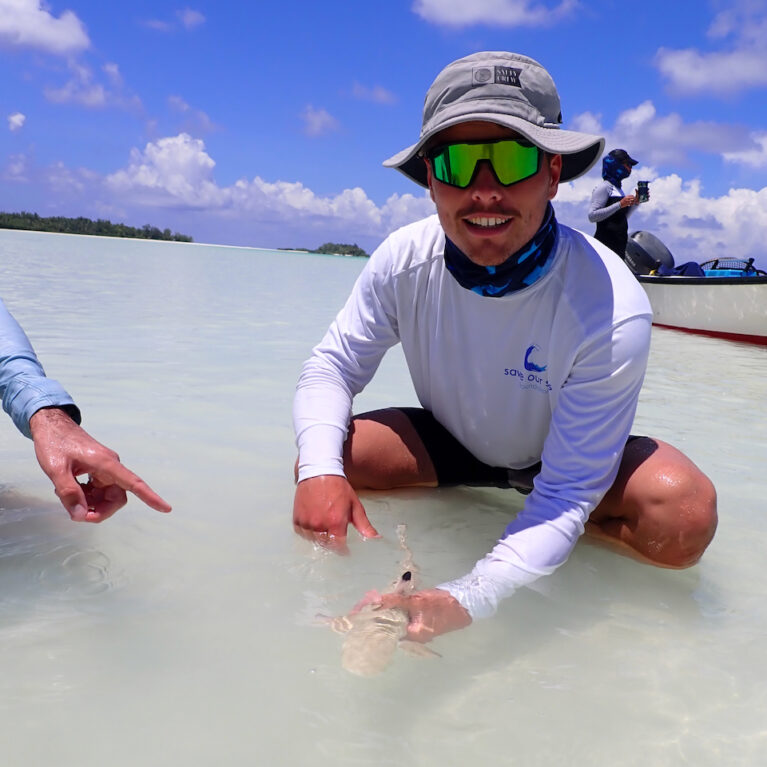Mapping The Reef
This project will investigate the scale at which structural complexity correlates with coral reef productivity and how this varies spatially in an isolated and largely unperturbed reef system. The project will further explore the application of structure-from-motion photogrammetry to quantifying spatial gradients in reef complexity and bleaching extent.
I would say that I’m a very passionate person, optimistic and full of ideas. I am ready to dedicate my life to contribute to the preservation of the environment and the fight against global warming. My interests are multiple, from the study of coral reefs, to the functioning of marine protected areas to the sequestration of atmospheric CO2 by algae. What these things all have in common is that they are all linked to the ocean, to scientific advances and to the enthusiasm I always present in order to realize my projects. Since I was young, and while I was...
Exploring the application of structure-from-motion photogrammetric techniques for assessing reef health at D’Arros Island and Saint Joseph Atoll.
1) to quantitatively compare structure-from-motion photogrammetry with traditional in-situ methods for monitoring reef ecosystem health as well as for quantifying reef complexity and coral bleaching at the fine-scale and 2) to investigate spatial variances in reef complexity, demography, and bleaching extent across remote, insular reef systems in Seychelles using structure-from-motion photogrammetry;
As the degradation of coral reefs globally continues at pace, developing intuitive and broadly applicable methods for measuring and monitoring reef status is becoming increasingly important. Methods and metrics with a high degree of precision can offer better insights and allow for more accurate assessment of impact and recovery to both short- and long-term perturbations. Traditionally percent coral cover has been widely used for detecting changes in reef status but this is considered a relatively coarse measure and may only detect significant changes over decadal timescales, hindering management efforts. By identifying and monitoring more fine scale metrics it should be possible to detect reef responses to acute stress events and measure recovery over shorter timescales.
Structural complexity is an integral component of coral reef ecosystems, playing a key role in biodiversity productivity and functionality in reef systems. A burgeoning number of studies have investigated the application of structure-from-motion (SfM) photogrammetry for reef assessment with a concomitant increase in the diversity of methods used. SfM photogrammetry produces high resolution 3D topographic reconstructions and from this is able to quantify ecologically meaningful reef characteristics. Studies have focused on reef complexity, colony growth, bleaching and organismal abundance. Though studies are many, contrasting findings to date evidence the need for further research, particularly in isolated and unperturbed environments. Monitoring of the reefs at Darros and St Joseph has been ongoing since 2011 however to date no assessment of reef complexity has been included. Research is showing that complexity is a critical component of reef health and should be integrated into long-term monitoring programmes. Testing its applicability alongside traditional in-situ methods will help to determine future best practice.
The aim of this project is to investigate the application of structure-from-motion (SfM) photogrammetry for quantifying various metrics of reef health and to examine spatial variation in coral reef complexity at the D’Arros and St Joseph site.
O1: Conduct SfM photogrammetry transects at established reef monitoring sites at D’Arros and St Joseph.
O2: Develop orthomosaic models from photogrammetry and extract different metrics for hard coral cover, reef complexity and bleaching extent.
O3: Compare outputs from SfM photogrammetry to traditional in-situ methods (benthic photoquadrat transects and line intercept transects).
O4: Investigate spatial variations in coral reef complexity at different sites as well its associations with other reef metrics and potential drivers for any observed differences.


